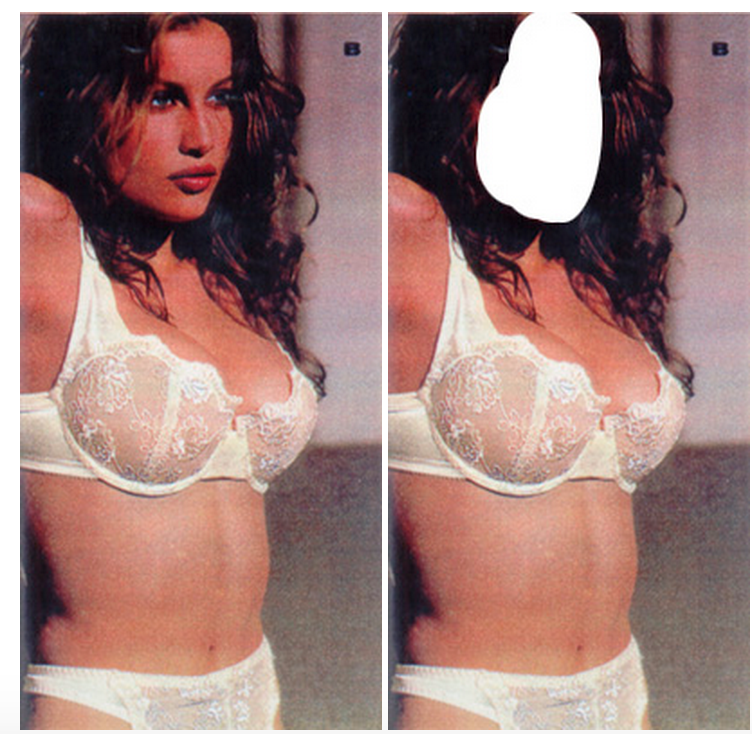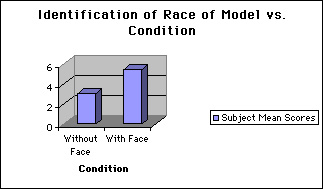Media Effects Research Lab - Research Archive
Perceptual verification of racial homogenization in advertising models
Student Researcher(s)
Amanda M. Frederick (B.A. Candidate);
Faculty Supervisor
INTRODUCTION
Racial homogenization is a common phenomenon in advertising and direct mail marketing. While marketers today are probably more likely to use minorities in ads and catalogues, the important point of discussion is the degree to which these models are perceived as minorities. For example, even when black models are used, light-skinned blacks predominate. Some marketers explain this by suggesting that most people can identify with a light-skinned black model, but not with a dark-skinned black model. Such a practice could lead to racial homogenization such that the skin tones of white and black models are virtually indistinguishable. This study was designed to assess whether readers perceive such homogenization by wrongly identifying models of minority races as Caucasians. Specifically, it examines the relationship between presence/absence of a model's face and accuracy of identification of the race of the model.
HYPOTHESIS
It was hypothesized that participants viewing a model without seeing her face (as compared to participants viewing the same model with her face intact) will be less accurate in identifying the black models as black, and more prone to categorize them as white models.
METHOD
Eighty-two participants were randomly assigned to one of two experimental conditions: a catalog with models' faces present or absent. Pictures of models from Victoria's Secret catalog were chosen since the catalog is a lingerie catalog and shows a lot of skin, allowing for ideal viewing of skin tone. Depending on the condition they were in, participants either saw the models with faces or without faces. All participants filled out a questionnaire while looking at the models' pictures. In addition to questions on attractiveness and prior exposure to the catalog, participants were also asked to guess the race of each model.

RESULTS
The models-with-faces condition had significantly higher scores on accuracy than the models-without-faces condition, thus supporting the hypothesis.

CONCLUSIONS
In this study, the presence or absence of facial cues was seen to affect perceived attractiveness and ethnic background. The findings of this study correlate with the findings of current research on the psychological importance of facial cues which support the notion of "identity-specific semantic code." By providing perceptual verification of racial homogenization in lingerie ads, this study suggests that minority models in popular media are perhaps being "whitewashed" in order to mask their real racial identity.
For more details regarding the study contact
Dr. S. Shyam Sundar by e-mail at sss12@psu.edu or by telephone at (814) 865-2173

